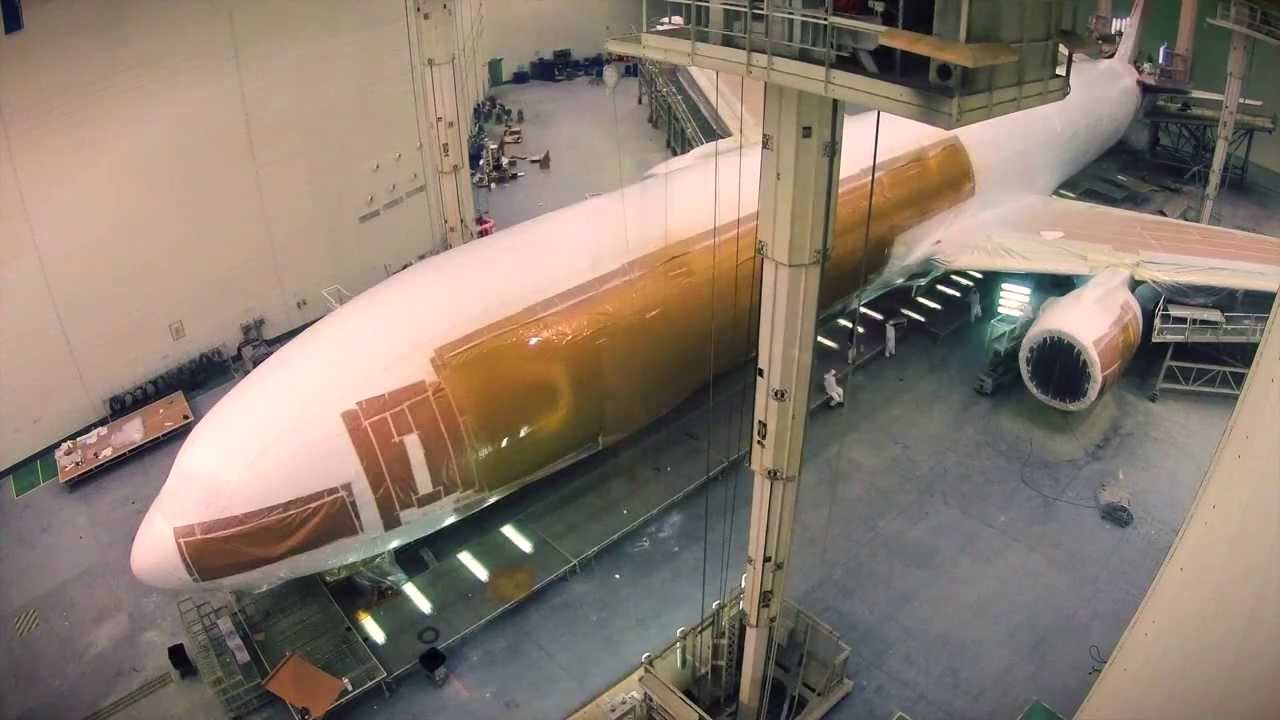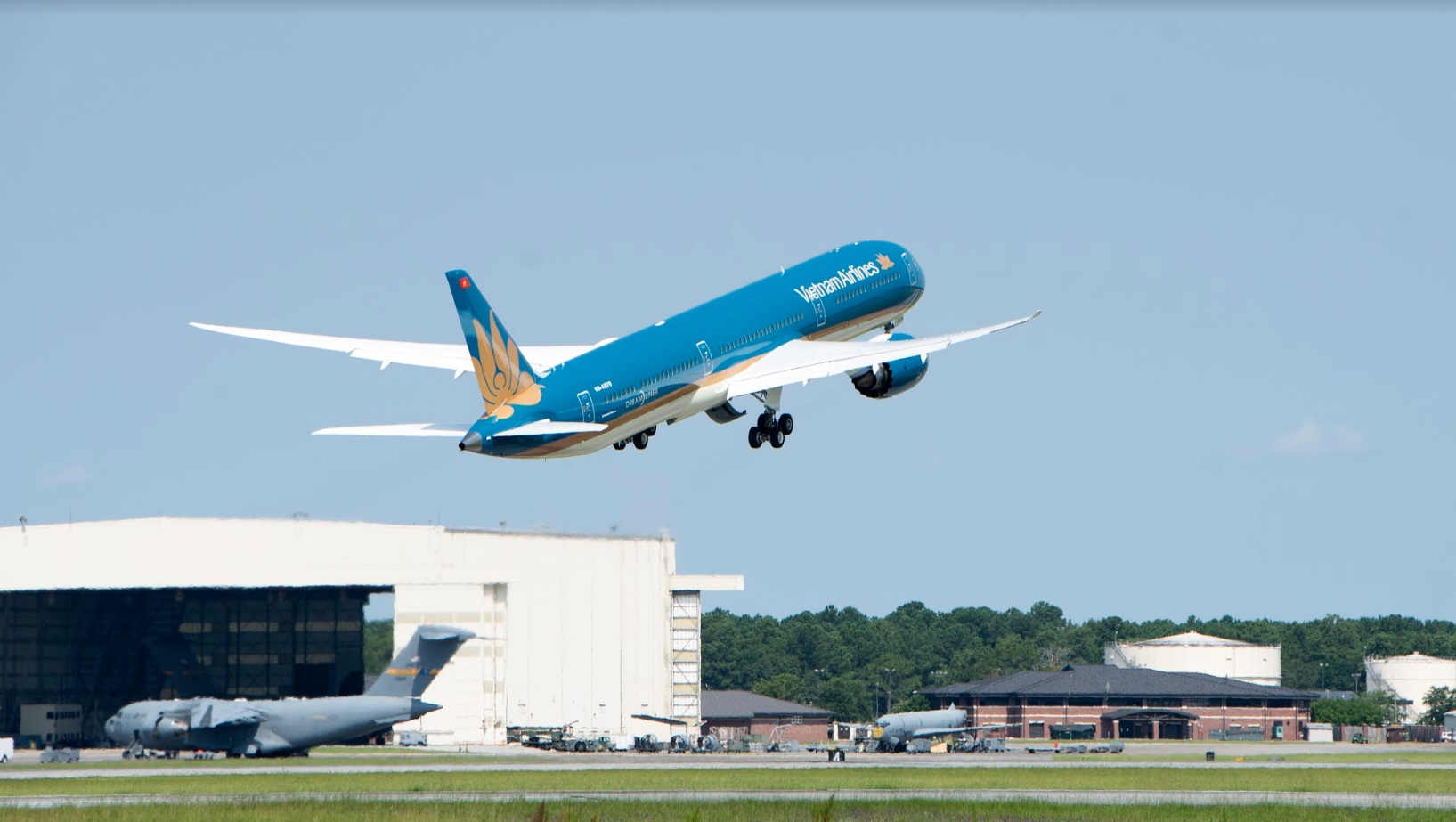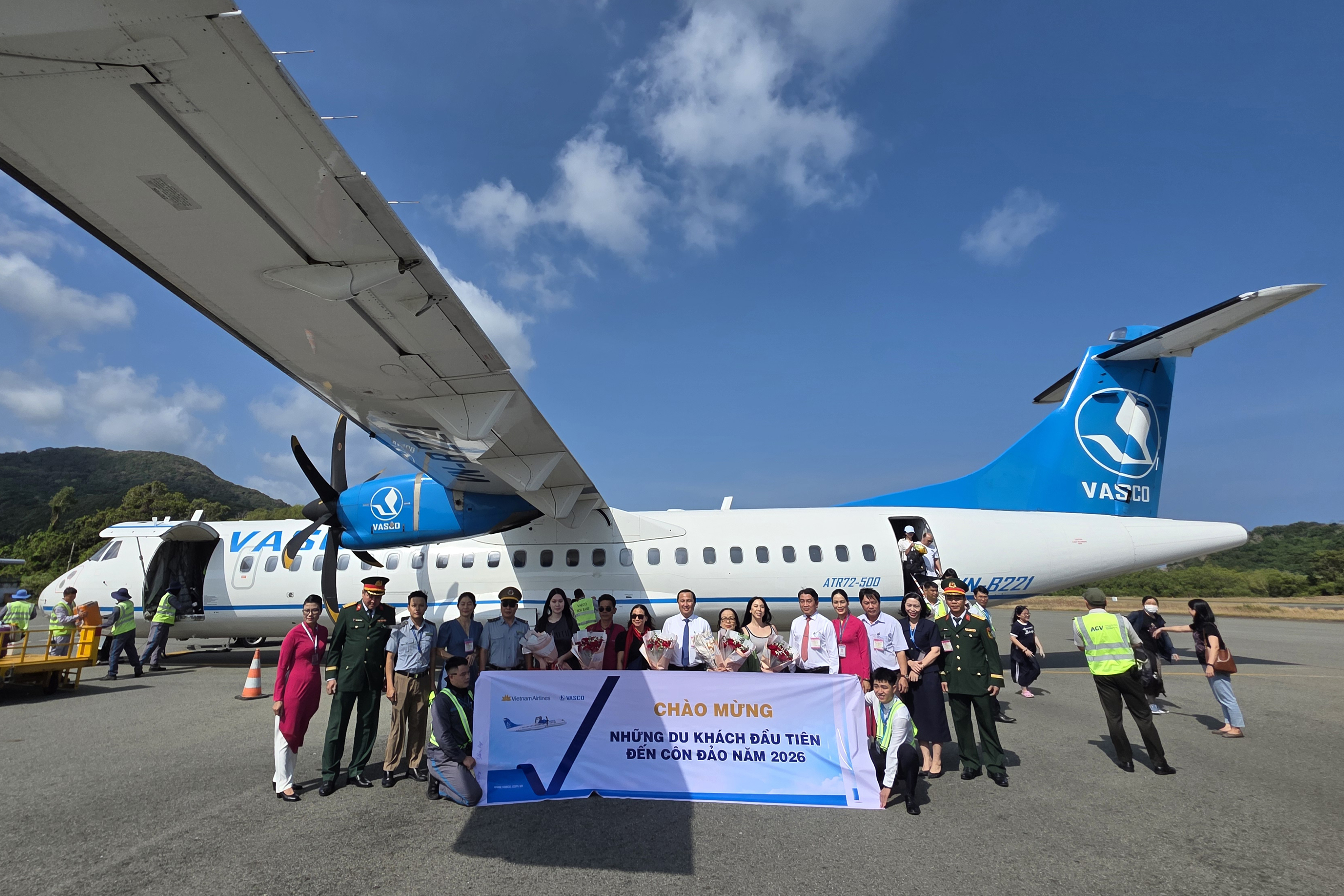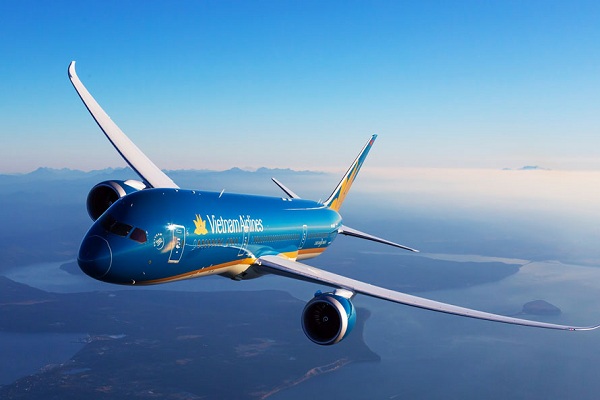Once the 787 rolls out of the factory, the delivery process begins. Though the amount of time it takes to deliver a 787 varies from customer to customer, the process always involves these steps:
- Painting and weighing
- Fueling
- Preparing for and conducting first flight
- Preparing the airplane for delivery
- Certifying, ticketing and delivering the airplane
Once a delivery date is set between the customer and Boeing, a detailed schedule is established that takes into account many variables, including the customer’s needs and even cultural traditions.
Painting and weighing
When the airplane exits the 787 Final Assembly factories, it’s already painted with a ready-to-go topcoat. This coating is applied at manufacturing sites to protect the airplane’s composite fuselage from ultraviolet light.
Once assembled, the airplane is towed into the paint hangar, where a crew of approximately 12 painters applies between 500 and 600 pounds (272 to 363 kilograms) of polyurethane paint on a typical paint scheme. The actual painting process takes approximately five days, which includes one day for sanding the topcoat to prepare the airplane for painting. More complicated liveries require additional time.
 Boeing’s aircraft in painting processs (Cre: Boeing).
Boeing’s aircraft in painting processs (Cre: Boeing).
The Boeing facility in Everett has three paint hangars, two of which are used for painting the 787. The North Charleston facility has two paint hangars.
Once the airplane is painted and decals and other placards are applied, it is weighed inside the paint hangar using a portable aircraft digital scale. The airplane must meet a specific weight target required by the customer at delivery. Before the airline’s crew can fly the jet home, more work must be done — the airplane must be fueled, tested and flown and the regulatory paperwork must be completed.
Fueling
When the 787 moves to the fuel dock, the team takes the airplane through a series of tests to validate that fuel system plumbing, pumps, valves, tanks and flight-deck controls operate correctly. Other systems such as the fuel quantity indicating system and refueling control panel, and hardware such as the jettison nozzles, are tested to ensure they work properly. The fuel also is tested three different ways to ensure cleanliness of the system; the auxiliary power unit is started for the first time while these tests are under way.
Aviation maintenance technicians fill the airplane’s fuel tanks with Jet-A fuel, which is a type of aviation fuel designed for use in airplanes powered by gas-turbine engines. Each 787 also is defueled to check that the defuel pumps work properly and that the scavenge system in the center fuel tank pushes fuel to the wings.
The quantity of fuel provided when the airplane is delivered varies from customer to customer; however, on average, a 787 has 91,000 pounds (41,276 kilograms) of Jet-A fuel at the end of the fuel-testing process. Before the airplane leaves the fuel dock, a standby compass calibrator is installed. The airplane is then towed to Compass Rose, where technicians “swing the compass” to calibrate it. The airplane then travels to a preflight stall to prepare for its first flight.
Preparing the airplane for first flight
All systems on the airplane must be tested before delivery. It starts with servicing: running the engines, ensuring that there is the right amount of nitrogen in the tires and shock struts and checking the hydraulic fluids.
Inside the cabin, technicians double-check the seats, flip every switch and push every button in the flight deck, test the in-flight entertainment system and make sure all interior fixtures are installed properly. It is not a superficial or cosmetic check: Engineers must certify that the cabin meets all U.S. Federal Aviation Administration (FAA) regulations. And at last, it is time to fly the airplane.
The first flight for any Boeing commercial airplane is called a “B1” or Boeing flight. Both Boeing and FAA pilots are authorized by the FAA to certify the airplane for operations. Only four people are authorized to be on board the B1 flight: two pilots, one systems operator and one systems analyst. Each person has a series of defined actions to complete during the flight, which typically lasts 2.5 to 3 hours.
 VNA’s Boeing 787-10’s first flight in Charleston (Cre: Boeing).
VNA’s Boeing 787-10’s first flight in Charleston (Cre: Boeing).
Before the airplane leaves the ground for the first time, pilots conduct a rejected takeoff to test the brakes. During this maneuver, the airplane is brought to near takeoff speeds and stopped abruptly. Upon successful completion, the airplane is ready to go.
Once airborne, the systems operator and analyst check that everything works the way it should. For example, every lavatory is checked — water turned on and off and toilets flushed — and every stow bin is opened and closed. The in-flight entertainment system also is checked.
As the crew heads back to the production site, the pilots disconnect the engine-driven generators to verify the ram-air turbine (RAT) works properly. The RAT, a small turbine connected to an electric generator, is one of the backup systems that ensure an airplane can be safely landed even in the highly unlikely event of an engine failure.
The flight crew will document any issues — called flight squawks — during the B1 flight so they can be fixed before the customer walk and final inspection. In some cases, additional Boeing flights are flown to verify that the airplane is ready for delivery.
Preparing the airplane for delivery
A customer walk and final inspection occur at the end of the process. Typically, a team from the airline arrives at Boeing to accept the airplane several days before the contracted delivery date. The acceptance team may include pilots, flight operation personnel, a team of inspectors and typically a contracts representative.
Before the delivery, the airline’s pilot, accompanied by a Boeing pilot, flies the 787 on a “C1” — or customer flight — using the same profile flown on the B1 flight and once again testing the systems and airplane response. Sometimes specific airline requirements also are incorporated into the C1 flight plan.
Certifying, ticketing and delivering the 787
Finally, the representatives from the customer and Boeing sign paperwork and settle the final payment for the new airplane. On delivery day, airline executives and Boeing contracts specialists gather to do so in a conference room.
Every delivery is as individual as the customer. Some may elect to have an elaborate ceremony with high-level guests and media, while others may simply take the airplane’s ceremonial keys and fly off to their destinations.
Cre: Boeing
Nguyen Mai Huong-COMM






